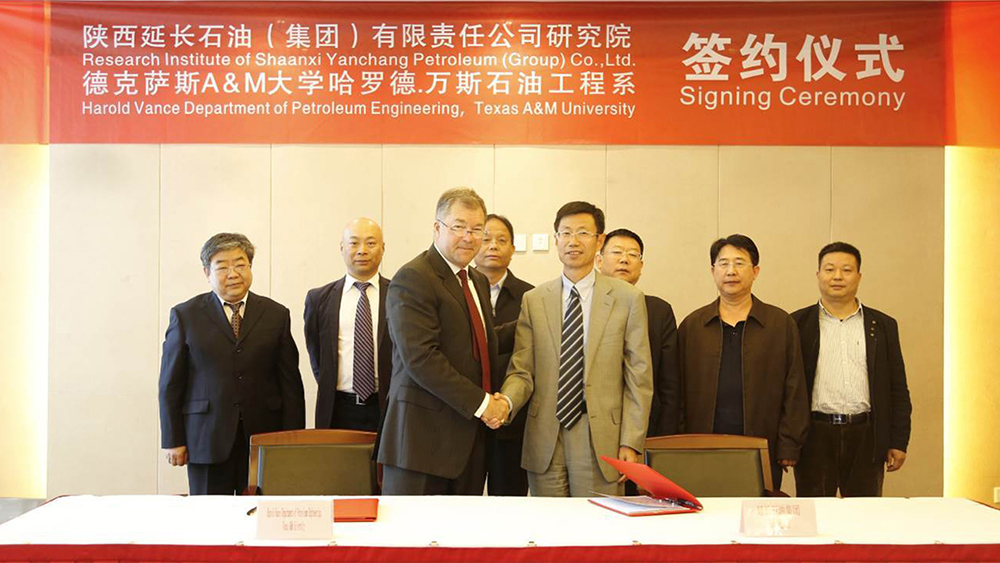
During a meeting on March 30, Dr. Jeff Spath, department head of the Harold Vance Department of Petroleum Engineering at Texas A&M University, signed a memorandum of understanding with the Research Institute of Shannxi Yanchang Petroleum Group.
This memorandum will pave the way for joint activities between the department and the institute by allowing:
- Joint educational and research activities
- Exchanges of technical materials and scientific data, technical information and publications (where legally and practically possible)
- Short-term exchanges of staff members for research, lectures and discussions
The meeting took place in Xian, China, where Yanchang invited Spath and Texas A&M to be a partner in researching one of the most challenging gas field development environments in the world. After signing the agreement, Spath shook hands with Dr. Ruimin Gao, president of the research institute, and expressed his thanks and appreciation to the team at Yanchang for hosting Texas A&M and for making the research collaboration a reality.
“We are currently looking into possible joint research projects involving tight gas and oil as well as unconventional oil and gas,” said Spath. “We’re confident that, working together, we can improve the recovery and increase efficiencies in Yanchang’s fields which have some of the most difficult challenges in the petroleum industry.”
Shannxi Yanchang Petroleum Group is the fourth-largest state-owned oil and gas enterprise in China and ranked 288 in Fortune Global 500 in 2018. Headquartered in Xian, its major business units include upstream exploration and production, refinery and processing, pipeline, petrochemical, retail gas stations and coal chemicals. It employs 120,000 people. Established in 1905, Yanchang drilled the first onshore oil well of China in 1907. Last year it reached a yearly oil and gas production of 12 million metric tons and 3.4 billion cubic meters respectively.
Yanchang has carried out a large number of theoretical and technological innovations in the development of tight gas fields with complex reservoir structures under lacustrine sedimentary environments. It has also obtained creative theory and industry-leading technologies in well pattern development and reservoir stimulation, which can be a reference for other lacustrine tight gas fields development around the world.